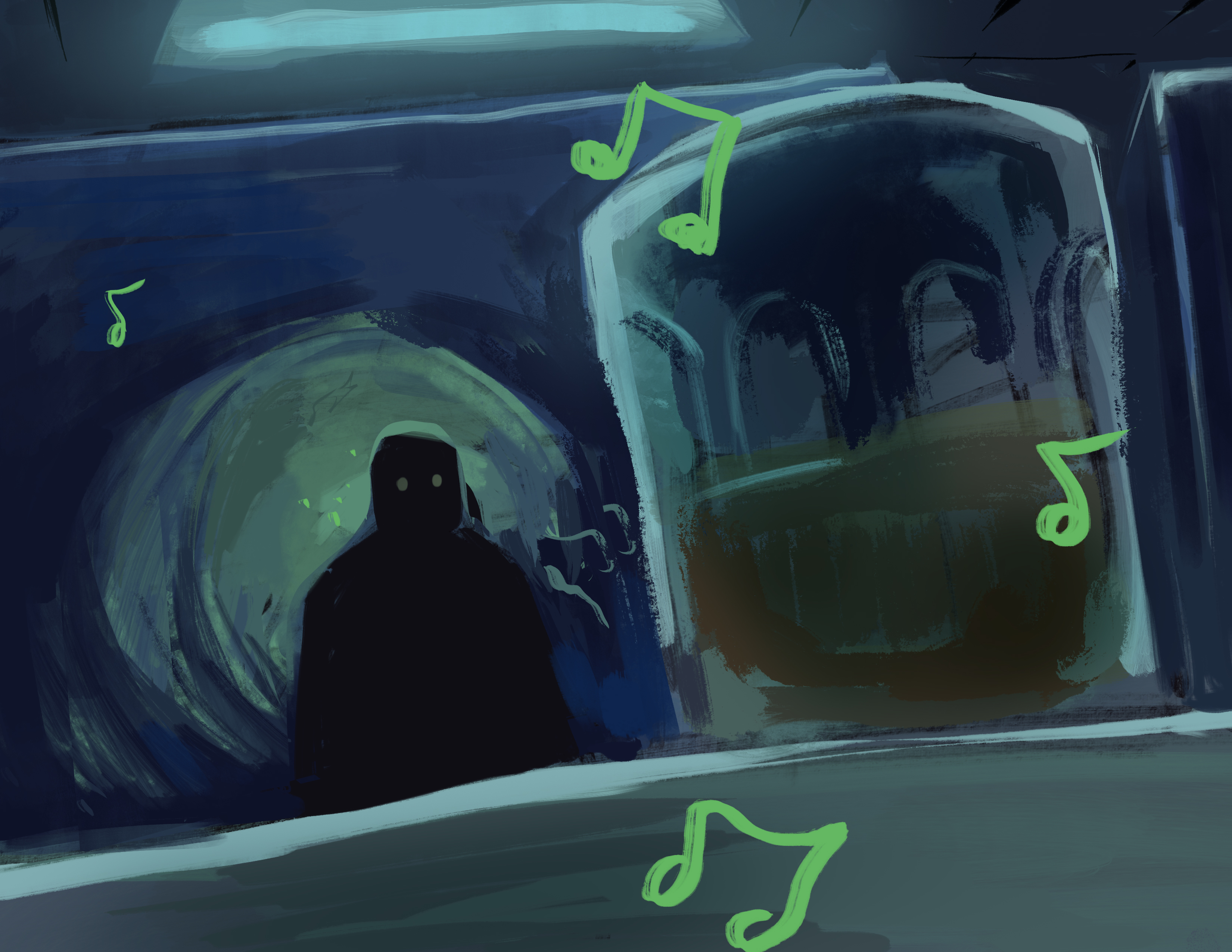Essays by Professor Tiberius Earwig Ph.D., FGS, as provided by Rebecca Siân Pyne
Art by Errow Collins
Dear Sir/Madam,
Specimen 16-001-TB/3 continues to amaze me. She has now grown to ten feet (three meters) and has a taste for choir boys. Ever since Igor lost a hand, my personal assistant has been wary of getting too close. Despite increasing his weekly salary to fifteen pounds, he refuses to go near the aquarium room.
In my last letter, I mentioned my dearly departed friend and mentor, Dr Frankenstein III, may he rest in pieces. Viktor said that Igor was the worst construct ever to come from his laboratory and offered me a free replacement, but by then I had grown accustomed to my malodorous minion. His final written warning would be more of a worry for him if he had ever learned to read. In putting him together, Viktor had the misfortune to select an illiterate’s brain.
My new assistant is a pretty girl with a first-class mind, good survival instincts, and an uncle in Her Majesty’s Asylum for Criminally Insane Academics.
There has been an interesting development in the question of 16-001-TB/3’s gender. Unlike many species in the genus Cythereis, Vampyrocythereis infernalis (Earwig, Pyne, Radchenko & Jones, 2016) is not two-sexed (dioecious). Males simply do not exist, all representatives being female. Although asexual reproduction is relatively common in non-marine ostracods, it is rarer in their marine counterparts. On reflection, this is a more efficient strategy for the deep sea.
On the seventh of June, Miranda produced twenty-seven offspring. The young share their mother’s appetite for live flesh. Considering this is a deep-sea species, they grow quickly and have already passed through two molts. I do not think there will be any instances of inter-sibling cannibalism, as long as the food supply does not dry up. For some unfathomable reason, travelling salespersons no longer call at my house, and choir boys are few and far between. The newsagents no longer deliver, and Igor has to go out to buy my paper.
Myfanwy’s diligence and strong stomach will help her succeed in the competitive world of applied ostracodology. She shares my fascination with the new life brought into the world and is currently engaged in training experiments. The hatchlings can now navigate a maze, with evidence of long term memory. Their cognitive abilities are more vertebrate than crustacean, but since they ate my white mice, we will be unable to run comparative tests. They seem to have developed a special affinity for her. Some might call me jealous of their affection, but I am not offended. Their mother will always be my favorite.
She sings to me at night now, a strange melodious song, which entirely banished my insomnia.
Last night, I woke up in the tank room with no idea how I came to be there, a curious cloud fogging my mind until chased away by a restorative triple whisky.
A more cautious scientist might suspect that sinister motives lay behind Miranda’s song.
So many questions remain to be answered, but I am prepared to take the risk.
I remain, as ever, yours in Science,
Professor Tiberius Earwig
To read the rest of this story, check out the Mad Scientist Journal: Winter 2018 collection.
Professor Tiberius Earwig, BSc (Bristol), MSc (Aberystwyth), PhD (Cambridge), is an internationally recognized authority on fossil and recent Ostracoda, with two hundred papers in The Journal of Micropalaeontology, Revista Española de Micropaleontología, Proceedings of the Ussher Society, Deep Sea Biology, Applied Biology and Musicology, and others. After a brief sabbatical at Her Majesty’s Asylum for Criminally Insane Academics, he retired to Whitby, but continues research. Professor Earwig is a member of Anti-Cites, an exclusive dining club which puts the world’s rarest species on the menu. Other interests include Elizabethan Madrigal singing. He writes Shakespearean sonnets and evil haiku.
Dr Rebecca Siân Pyne is a writer, researcher (and mental health first-aider), now based in West Wales, via Cardiff University and the Swiss Federal Institute of Technology, Zurich. She has a PhD in Micropalaeontology, specializing in British Upper Cretaceous ostracods, with published research in Revista Española de Micropaleontología and Palaeogeography, Palaeoclimatology, Palaeoecology. Short stories have appeared in Bête Noire, Macabre Cadaver, Bards and Sages Quarterly, Albedo One, Aurora Wolf, Eschatology, Neo-Opsis, and others. Research assistants include a mad sprollie (springer spaniel x collie) who ensures there is no time for writer’s block.
Errow is a comic artist and illustrator with a predilection towards the surreal and the familiar. She pays her time to developing worlds not quite like our own with her artist fiancee and pushing the queer agenda. She probably left a candle burning somewhere. More of her work can be found at errowcollins.wix.com/portfolio.
“Reproductive Strategy in a New Giant Carnivorous Ostracod” is © 2017 Rebecca Siân Pyne
Art accompanying story is © 2017 Errow Collins

